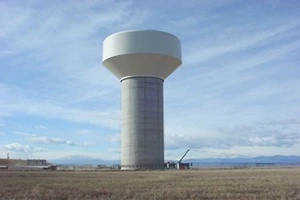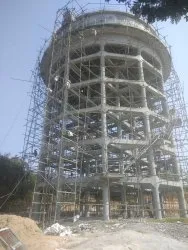

1.Over Head Tank Waterproofing | OHT – importance
Overhead tanks (OHTs) are an important component of many buildings, as they are used to store water for domestic or commercial purposes. OHTs are often located on the top of a building, exposed to the elements, and as a result, they are prone to water leaks and damage. Therefore, waterproofing of an OHT is essential to prevent water leaks, damage to the tank structure, and to ensure the quality of water stored inside the tank.
Here are some reasons why OHT waterproofing is important:
- Prevents water leakage: Waterproofing of an OHT prevents water leakage from the tank, which can cause damage to the building’s structure and lead to the growth of molds and mildews. Water leakage can also lead to water wastage and result in a higher water bill.
- Protects the tank structure: Waterproofing protects the tank structure from the damaging effects of water, which can cause cracks, rusting of metal, and other forms of structural damage. These can weaken the tank structure and compromise its ability to hold water.
- Saves money: Waterproofing an OHT can save money in the long term by reducing the need for repairs, maintenance, and replacement of the tank. It also helps to reduce water wastage and the associated costs.
There are different types of overhead water tanks used for various purposes in buildings. Here are some common types of overhead water tanks:
- Domestic water tank: This type of water tank is used to store water for domestic purposes such as drinking, cooking, and bathing.
- Fire water tank: Fire water tanks are designed to store water that can be used in the event of a fire. They are often required by building codes and are usually made of steel or concrete.
- Flush water tank: This type of water tank is used for flushing toilets and urinals in buildings.
- Soft water tank: Soft water tanks are used to store water that has been treated to remove minerals such as calcium and magnesium, which can cause hard water.
2. available systems for Over Head Tanks Waterproofing | OHT
There are several available systems for waterproofing overhead tanks (OHT). Here are some common systems:
- Cementitious coating: This system involves the application of a cement-based coating on the internal surface of the OHT. The coating is typically mixed with a waterproofing additive, which improves its water resistance. This system is cost-effective, easy to apply, and can provide a durable waterproofing solution.
- Liquid-applied membrane: This system involves the application of a liquid waterproofing membrane on the surface of the OHT. The membrane is typically made of polymer-modified or acrylic emulsion. This system is easy to apply and provides a seamless, flexible, and durable waterproofing layer.
- Torch-on membrane: This system involves the application of a torch-on waterproofing membrane on the surface of the OHT. The membrane is typically made of modified bitumen and is applied using a propane torch. This system provides a durable and long-lasting waterproofing solution. The membrane is then required to be plastered with Cement Mortar.
- Polyurethane coating: This system involves the application of a polyurethane coating on the surface of the OHT. The coating is typically sprayed or rolled onto the surface and provides a seamless and durable waterproofing layer. This system is commonly used for roofs and can also be used for OHTs.
- EPDM membrane: This system involves the application of an EPDM (ethylene propylene diene monomer) membrane on the surface of the OHT. The membrane is typically glued or mechanically fastened to the surface and provides a durable and long-lasting waterproofing solution.






3. selection of Over Head Tanks Waterproofing system | OHT
The selection of an Over Head Tank (OHT) waterproofing system depends on several factors such as the type of tank, the material used to construct the tank, the age of the tank, the condition of the tank, the location of the tank, and the type of waterproofing system preferred by the building owner or the contractor.
When selecting an OHT waterproofing system, it is important to consider factors such as the cost, durability, ease of application, and the type of protection provided by the system. It is also recommended to consult with a waterproofing expert to ensure that the selected system is appropriate for the specific needs and conditions of the OHT.
GEOLIZ WATERPROOFERS PVT. LTD.
Waterproofing Products & Services Guide
For details on other waterproofing products & Services
